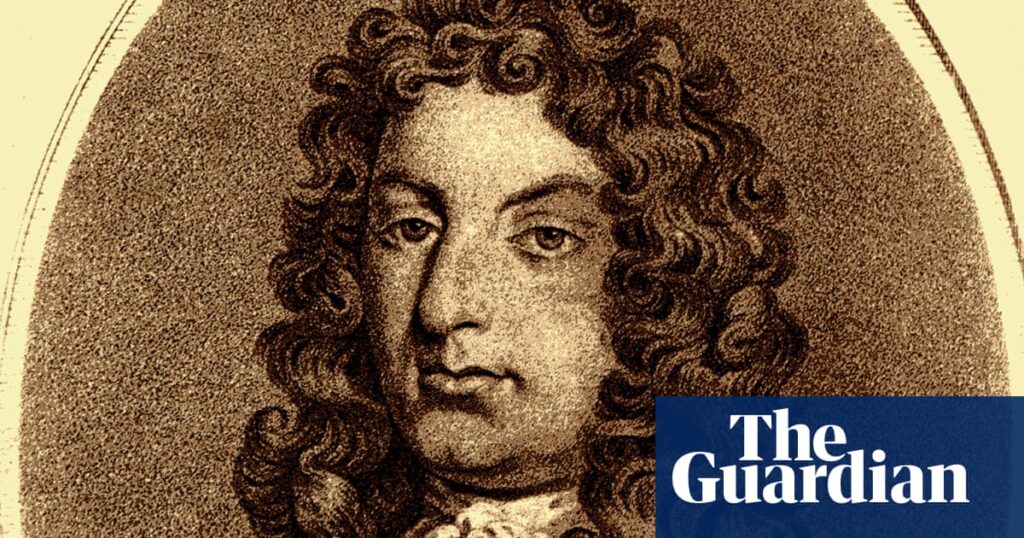He was the leading English composer of the 17th century, writing masterpieces such as Dido and Aeneas and The Fairy Queen before his life was cut short in 1695, aged just 36.
Now two significant discoveries of music by Henry Purcell have been made, to the excitement of musicians.
A team of musicologists has unearthed the printed score of a previously unknown Purcell song, as well as the original manuscript for various keyboard compositions, partly in the composer’s own hand – the first Purcell autograph to be found for more than 30 years.
They have been unearthed from two local authority archives respectively, Worcestershire and Norfolk, having been forgotten among routine administrative documents within records offices.
Stephen Rose, a professor of music at Royal Holloway, University of London, told the Guardian: “Both discoveries show the crucial role of county council archives and their staff in preserving this musical heritage. Both give important insights into the type of music Purcell was writing in the last five years of his short life.”
Rose heads a project, titled Music, Heritage, Place: Unlocking the Musical Collections of England’s County Record Offices – a collaboration between Royal Holloway, University of London and Newcastle University, cataloguing music manuscripts in local archives that are “often struggling after decades of local authority funding cuts”.
The printed song, “As soon as day began to peep”, was written for a character called Monsieur le Prate, a French fop, in a 1691 play titled Love for Money, which lampooned a girls’ boarding school. Its author was Thomas D’Urfey, a frequent collaborator of Purcell.
Rose said that, in this song, the fop is “not quite in control of his emotions” in trying to woo a woman: “He comically compares himself to a cat howling and scratching at the door of his beloved, with Purcell representing the miaows in music.”
He added that, at the play’s performance in London, audience members booed it as a malicious attack on the girls’ boarding school in Chelsea, where D’Urfey had stayed in 1690: “Purcell’s opera Dido and Aeneas was performed at the same school in around 1687, so it is interesting to see Purcell also involved in a play that satirised the venue of his opera and the girls who sang in it.”
Although incomplete, the newly discovered song had survived among legal warrants. It can now be performed again, having been reconstructed by Alan Howard, chair of the Purcell Society and college associate professor of music at Selwyn College, Cambridge.
He described the find as “highly significant”, adding: “This is a piece we were completely unaware of by Purcell, the major composer of that era in England. It’s almost unheard of for something like that to turn up. We would normally know about it from the published play text or a diary entry by someone who heard it in the theatre. But there’s just nothing like that.”
The keyboard manuscript has a lavish binding in red leather with gold decoration, suggesting that it was once owned by a wealthy individual. It had been repurposed around 1810, with some of the blank music staves being used as lines for the index of Thetford town council records.
Yet it contains nine pieces by Purcell and his fellow composer John Blow, in different versions from those currently known. Rose said: “Three of the pieces by Purcell are in the composer’s own hand, recognisable for its distinctive note-shapes and musical symbols …
“They include early versions of his G minor suite. It contains many differences of keyboard texture and ornamentation, giving insights into how Purcell may have played the harpsichord.”
The Norfolk keyboard manuscript will feature in the final episode of the BBC Radio 3 programme The Song Detectorists, to be broadcast on 24 October. Rose will perform its version of Purcell’s G minor Allemand.
The Norfolk and Worcestershire archives are each making digitised versions available. Further details on these discoveries will be published in a scholarly article by Rose, Howard, Caro Lesemann-Elliott and Andrew Woolley.
The research project is funded by the Arts & Humanities Research Council.

